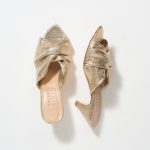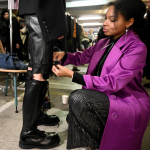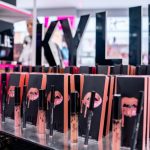In our long-running series “How I’m Making It,” we talk to people making a living in the fashion and beauty industries about how they broke in and found success.
Fresh from a work trip (albeit, a fun one) to his hometown of Chicago, Mickey Boardman shows me his new Stella McCartney bag over Zoom, which has already become a prized possession. He bought it from his old friend Ikram Goldman’s famed Ikram boutique. Shopping in the Windy City is nostalgic for Boardman: It’s where he fell in love with fashion before finding his way into the magazine world.
Boardman is now the special projects director at Paper, which was recently resuscitated from the grave of beloved magazines. Before the title (briefly) closed, he’d been there for three decades, starting out as an intern after finding his way to New York City from the Midwest suburbs.
“I was at Parsons, not really liking it — I realized I was not meant to be a designer but loved fashion,” Boardman says. He had fallen in love with magazines while in line at the grocery store. He had an epiphany when he interviewed Rupert Everett as a student: “I started writing more, though it took me a long time to think I was a writer. It was a dream come true.” He realized that, as an editor, “I could hang out with famous people in tank tops.”
Over the course of his 30 years at Paper, he sired fashion editorials that inspired conversation and, famously, “broke the internet,” in the case of that 2014 Kim Kardashian cover for the issue of the same name. Ahead, Boardman talks about those early years of his career, how he worked his way up the masthead and more.
Photo: Sean Zanni/Getty Images
What was your relationship like with fashion growing up, especially being in the suburbs?
My dad was a pharmacist, and my mom was a housewife. Nobody I knew was involved in fashion or anything creative, so it never really entered my mind that you could have a job like that. But I always loved Cher and Carol Burnett in the seventies — Bob Mackey did their clothes — and the Supremes’ 1960s Las Vegas looks. There was a lot of sparkle and glamour. My mom had me when she was 20; she was very young and would wear some crazy outfits that I always was excited about.
I remember being at the supermarket when I was 10 and discovering magazines. There was this whole rack; this was the seventies, so there were thousands of magazines. Now, we’re all dying. I remember seeing Vogue at the checkout stand, (from) when Grace Mirabella was the editor, and every issue looked exactly the same: They were all shot by Richard Avedon, they were usually in a chunky knit sweater with maybe a hot-pink eyeliner. I remember thinking at the time, ‘I really want to buy that, but why would a 10-year-old gay need to buy a woman’s magazine?’
I remember always being obsessed with mastheads, wondering, who’s this? I always really loved magazines. But what was maybe the most important developmental thing for me fashion-wise was ‘Style with Elsa Klensch’ on CNN. She went to the craziest shows, so, because of her, I would see Comme des Garçons, Chanel, Chloé and designers you’ve never heard of, like Laura Biagiotti and Genny. It was an incredible in education. That really got me addicted to these big names.
In Chicago at the time, on Oak Street, there was a store called Ultimo, which ironically my friend Ikram worked at as a sales girl before she started her own store. I would go there and get my fix. It was my dream to get the Bottega Veneta hobo bag, which is not what the average 14-year-old boy in Hannover Park, Illinois wanted. I dressed a little gay, in a way that the other kids didn’t — but that didn’t go completely crazy until I moved to New York in college.
I went to Purdue University in Indiana and studied Spanish. I lived in Madrid for my junior year, and, after I graduated, I lived there again. That’s where I really got more into international fashion. It was the first time that I would see people and be like, ‘Wow, those people are amazing. I wish I could be friends with them.’ And then I was friends with them. Before then, I had friends who were great and everything, but it wasn’t like we had so many things in common, whereas these were people who were interested in fashion, travel and similar things to me.
Then, I moved to New York to study fashion design — that’s where I really started dressing like a freak. I was an intern at Paper while I was going to Parsons. I failed a class my senior year and didn’t finish. Right when that happened, somebody quit, so Paper hired me the same week.
Photo: Jamie McCarthy/Getty Images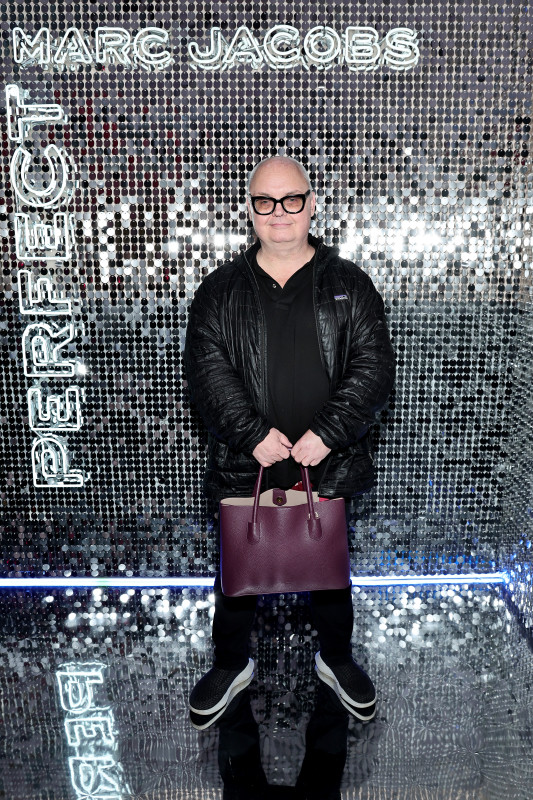
How did you end up at Paper in the first place?
We had to do internships at Parsons.
My second time in Madrid, I became friends with Alex Kaczynski; one of his best friends from high school was the managing editor of Paper, Wendy Gabriel. So, when we moved back to New York, Paper was my favorite magazine. I would read it the day I got it every month.
When I met Wendy, I told her how much I loved Paper, and she was like, ‘Do you want an internship?; I can hook you up with the intern lady.’ (That was) Maggie McCormick — she liked me and hired me in the summer of 1992 and again in the fall of 1993.
Kim Hastreiter, who started Paper, her whole thing was, ‘It’s better to have a diehard fan interview someone as opposed to someone who went to Columbia School of Journalism.’ Kim always said, ‘If you talk, you could write.’ I certainly could talk. I liked writing in high school, but never thought I could be a writer. At one point, Wendy needed someone to interview Vanessa Paradis. I was obsessed with her, but I said, ‘I’m not a writer. I don’t think I can do it.’ I talked them out of it, and still regret it to this day.
I always tell people: Do not talk people out of giving you opportunities. Our instinct to be like, ‘I can’t do it’ or ‘I’m not worthy…’ Nobody knows what they’re doing. Just fake it until you make it.
A month later, Wendy came to me again and said, ‘I need somebody to interview Rupert Everett.’ I loved Rupert Everett also, but, again, I said, ‘I don’t think I can do it,’ which was so dumb. I was such an idiot. But Wendy, thank God, said, ‘Let’s make a deal: Write the introductory paragraph as if you already did the interview. If I think it’s good, you have to do the interview.’ She loved it, and then I skipped school to interview him.
Photo: Manny Carabel/Getty Images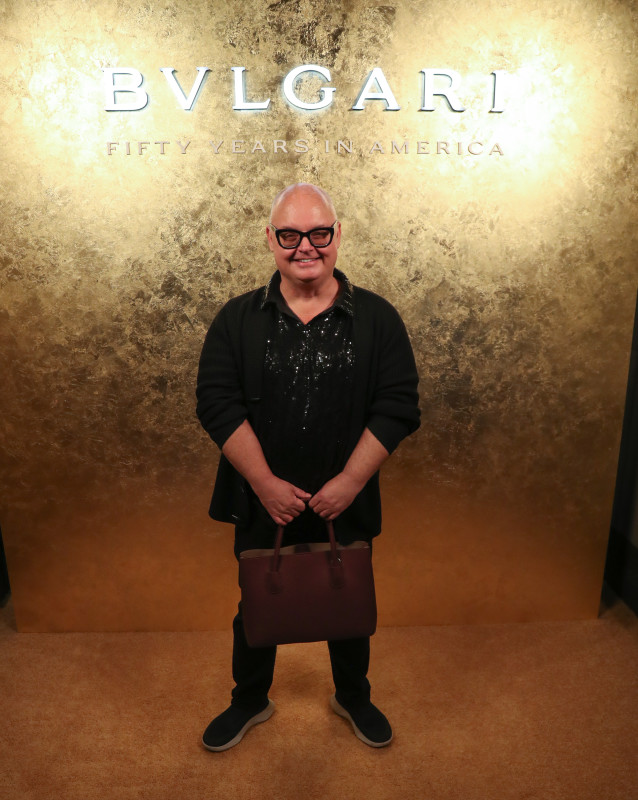
I think a lot of people relate to that feeling of imposter syndrome. What was it like after that first story?
I always thought, somebody is going to come in here at any point and be like, ‘This fool doesn’t know what he’s doing.’ It took me years to feel like I wasn’t going to get fired or have someone confront me, calling me a phony.
When did you find your voice as a writer?
I had it when I started, shockingly. The thing is, I was lucky because Paper encouraged me to have my voice. It wasn’t anonymous, personality-free copy, which is what normal places generally do.
So much happened since then. Could you walk me through the major moments that you’ve had?
One of the biggest ones was not being the receptionist anymore. I’d be answering the phones while doing interviews. One day, the phone rang, and the voice said, ‘Who can I fax my resume for the receptionist position?’ I ran to Kim’s desk! I had separation anxiety from the phones, though, and missed being like air traffic control for the office.
My first big feature in 1993 was a moment. It was a two-page story about Wigstock, the yearly drag festival on Labor Day. My first cover story of Milla Jovovich when she was 16 was also a big one. It was never like, ‘My title’s changed, and now it feels different’ — but there are moments like the first time in the front row at a fashion show, first time going to Paris for a show.
My first show I ever went to was Marc Jacobs when he was at Perry Ellis. It was a show at Parsons, probably 1991, with Linda (Evangelista), Naomi (Campbell) and Christy (Turlington).
Photo: Dimitrios Kambouris/Getty Images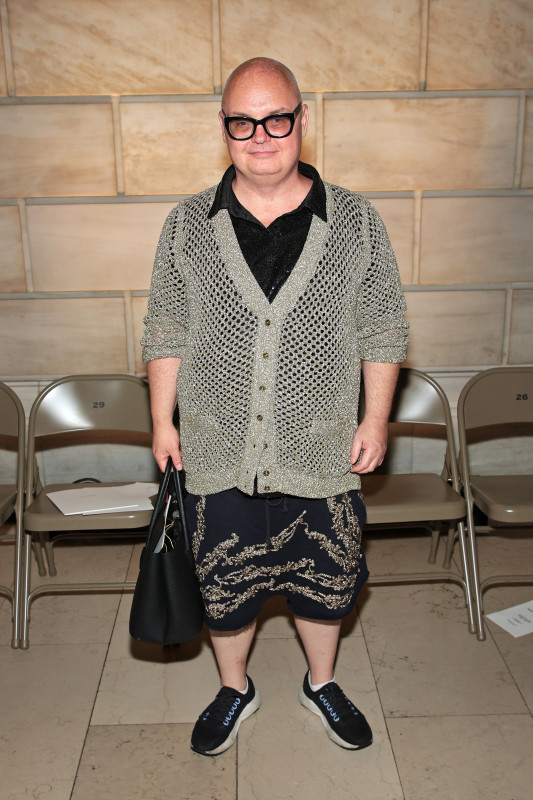
You’ve stayed at Paper for your whole career really. How come?
It’s really the only job I’ve had. Those four months not being there was challenging. Even when Kim and David sold it, that was change, in a way. And then the pandemic happened, we stopped being in print and I was only part-time, so that was sort of strange. But I always had that connection. I just find that the most satisfying things about a job come after you’ve been there for a while, when you have some seniority or when you have experience and you know what you’re doing and the imposter syndrome has faded into the background and you feel confident.
Whether it’s Paper today or all those magazines in the grocery store back in Illinois, you’ve seen so many shifts in media. How have you navigated those?
So many things have changed, but at the same time, at the core, it’s the same. Fashion is about the look, the outfit — whether it’s at a fashion show, whether you see it on TikTok, whether you see it in person. It’s the same with magazines: Back in the day, we would shoot the shows, and then you wouldn’t see those clothes for months, unless there was a gossip story. Now, if you have a phone or Wi-Fi, you could get a better seat at the Balenciaga show than I have after 30 years in fashion. Though, there’s nothing like being there in person. But the thing is, it’s still about the runway show, about the celebrity.
In the end, there’s always been content, and there’s always going to be content. It’s crazy to have the things that you’ve known collapsing around you, but, weirdly, in media and fashion, people are so old-fashioned and do things the way they’ve always been done, just because that’s how they’ve always been done. During Covid, when people were liberated from that and forced to be creative, there were some good moments. I like how Marc Jacobs just does his show whenever he’s ready.
It’s hard for a fashion publication to survive today, especially compared to 20 years ago. Can you talk about what it felt like going through the Paper closure and rebirth, being much closer to it?
I always felt insulated because Paper was independent. We were sort of cult members who felt like we really put our hearts and souls into it. It wasn’t just a job. When it was sold, things were a little bit different. Having the whole staff fired was traumatic, certainly. We already had PTSD from Covid. The last owner of Paper had been well-deservedly dragged for racial issues. We’ve been through a lot of drama. But at the same time, I felt like I’m just a cockeyed optimist. I’m just one of those fools who always tries to look on the bright side.
Even after we were fired, some friends and I who had worked there for a long time said, ‘Maybe it’s good because we would never leave. This is the only way we’ll ever leave and move on to something new while there’s still time.’
Photo: Gonzalo Marroquin/Getty Images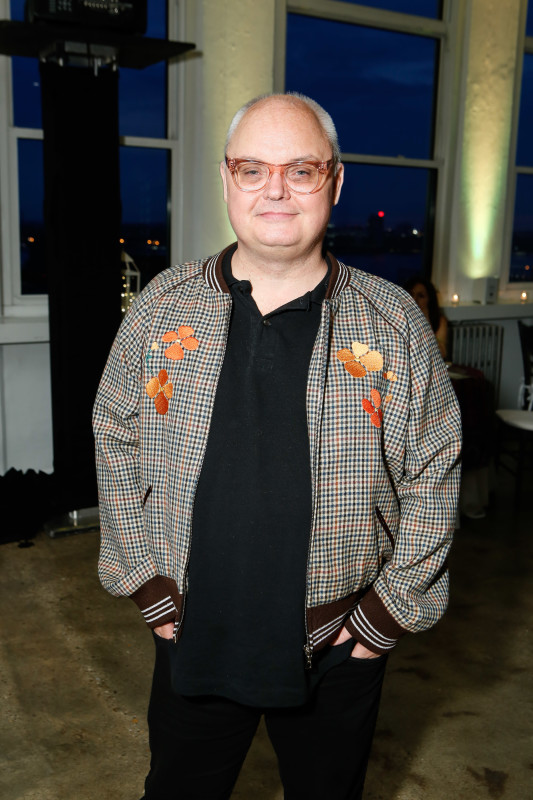
Does it feel like a new start?
I’m director of special projects, so I’m working on big projects throughout the year. That’s why I’m excited for the anniversary year. I have, for a long time, not been such a pop-culture addict. Now, I leave it to the young people to know who’s who. I look at the bigger picture and the history of Paper and how that translates to now and the future. But I also don’t want to get trapped in nostalgia. It’s amazing to be back.
As warped as it sounds — always like a cockeyed optimist — I think we learned a lot from it being sold. There’s a new owner now who’s great, and he’s gay, which is nice. It just feels like, what’s the worst thing that can happen to us at this point? We’ve already gone bust and lost our jobs, so we’re excited to be back and doing the stuff that we do. I have to say, when we did close, the outpouring of love and support was really heartwarming.
You’ve talked about starting to see the world with an editorial lens, which lends itself to some of the iconic photoshoots you’ve worked on, like Kim Kardashian’s “Break the Internet” cover How did you come up with that?
That one was funny. Drew Elliott, who’s now global creative director of Mac Cosmetics and Too Faced Cosmetics, had been a Paper intern. As our 30th anniversary was coming up. Kim (Hastreiter), David and I were talking — it’s so hard to plan for big things for the future since we’re so busy putting out the fires of today. We said it’d be amazing to hire somebody who just was going to think about the anniversary. I said, ‘Why don’t we ask Drew?’ He said, ‘I want to come back, but I want to take over the magazine and give it a makeover.’ So we did that.
It was the first time ever that we had really done all the classic stereotypical magazine things, like making a mood board. Drew’s idea for the 30th anniversary cover was Kim Kardashian, because he thought she was the mother. We made this amazing presentation of all the ideas for the issue and had already reached out to Kim (Kardashian). We knew we wanted it to be shot by Jean-Paul Goude, who we had worked with before, and Kim said yes to Jean-Paul Goude. We were ready to roll. But Kim (Hastreiter) didn’t want Kim (Kardashian) on the cover for that issue. She loved the Kardashians, but she said, ‘I’d love her for another cover, but this is Paper’s anniversary, where we’re looking back.’ So, me and Drew went downstairs to talk on the street.
Of course, I’m from the Midwest, like, ‘Fuck, we already asked her to do it. What can we do? We can’t back out.’ Drew said, ‘If we have Kim Kardashian on the cover, it will break the internet.’ I said, ‘Break the internet?! That’s such a funny name. What if we do a separate issue that’s only about breaking the internet?’ That’s really what everyone was trying to do at the time. Kim (Hastreiter) said it was perfect for the art issue. It all came from Drew throwing away and saying, ‘Break the internet.’
What’s your advice to the next generation of aspiring editors?
All the clichés your mother told you: Be yourself. Work hard. You might not be rich, you might not be famous, you might not have the right handbag, but none of that matters — you could still be the first one, the hardest worker, the one who gets stuff done very quickly. That sticks out, and that’s when more opportunities come.
What’s the best piece of advice you’ve ever received?
Be yourself, and also be nice to everybody, because people remember. Not that I hold a grudge, but I remember someone who was mean to me on the phone in 1992. You always remember someone who was nice to you, and you always remember someone who was horrible to you.
What do you look for in a new hire?
Hard work and reliability.
This interview has been edited and condensed for clarity.
Want the latest fashion industry news first? Sign up for our daily newsletter.

